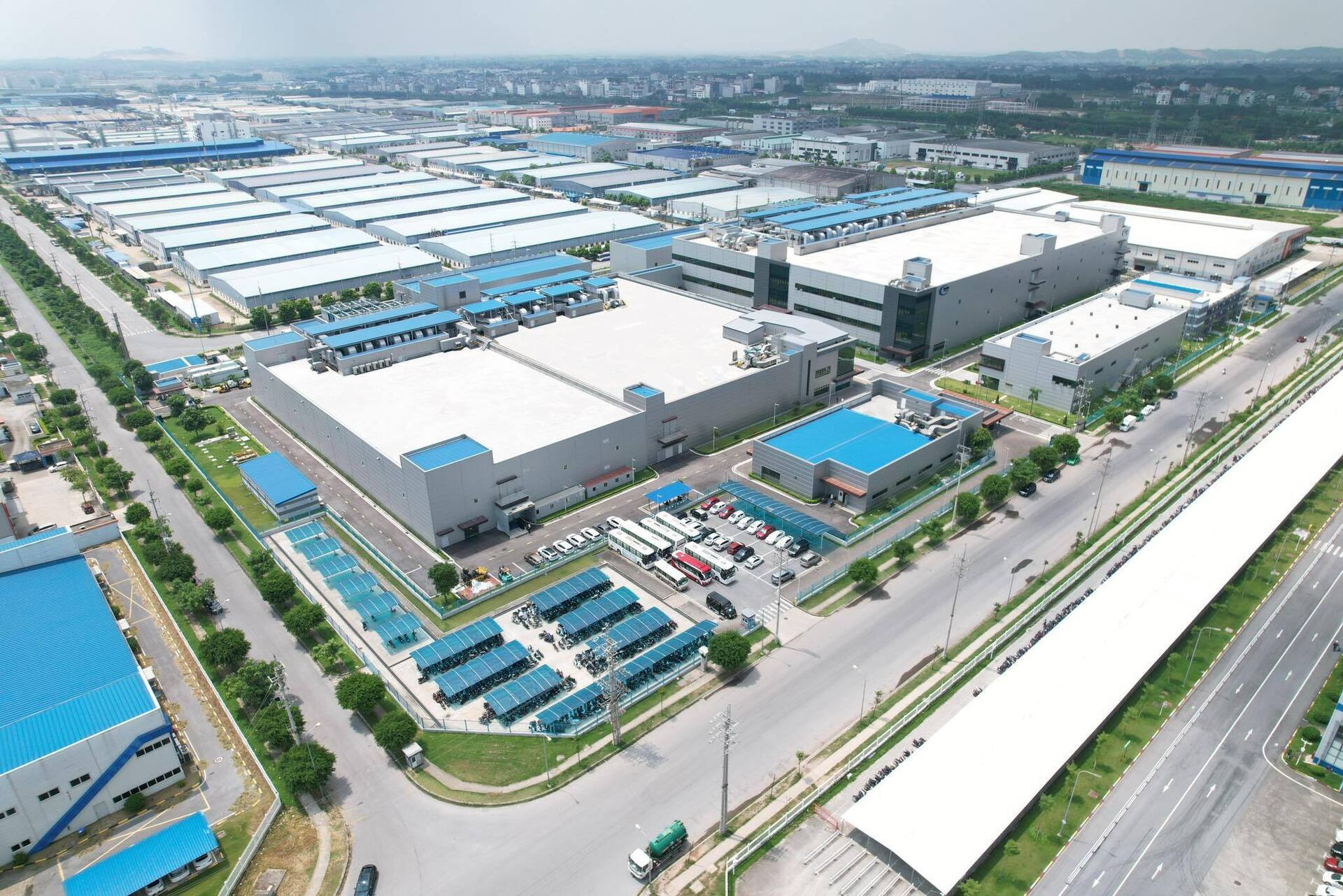
A conference on Vietnam-Korea cooperation in the field of semiconductor was held in Hanoi August 6.
Vo Xuan Hoai, deputy director of the Ministry of Planning and Investment’s (MPI) National Innovation Center, said there are more than 40 chip design and 15 ATP firms in Vietnam and manufacturers of other semiconductor devices. Most of the largest firms, except Intel, are from South Korea, namely Samsung, Hana Micron and Amkor.
Semiconductor center
Speaking at the conference, Kim Chang Wook said the global semiconductor industry is developing in a butterfly-like shape, with the US CHIPS Act and the global chip shortage crisis after Covid-19.
The current conditions create a momentum for both leading countries like South Korea and latecomers like Vietnam to join the global chip value chain, especially with lower barriers for participating in final links of the value chain. With the development of the automation industry, production costs have decreased significantly.
Meanwhile, the supply chain of the semiconductor industry is under deep restructuring, with less reliance on semiconductor clusters all over the world, with each phase assigned to a country or a region based on their advantages.
A typical semiconductor development model is that chips are researched in Europe, designed in the US, manufactured in Taiwan (China) and packaged and tested in Southeast Asia.
Kim believes that the supply chain of the semiconductor industry will no longer look like this in the years to come. Instead, the world will witness the formation of regional value chains, with focus on countries with close relations.
The most obvious evidence of the trend is the US semiconductor localization strategy, with the labor division between the US, Mexico and Canada. Of these countries, the US will act as a center in charge of design and development, while Mexico will focus on packaging and testing, and Canada will provide materials and support research.
The major reasons behind the trend are the escalating geopolitical tensions, especially because of the US restricting the export of chip manufacturing equipment and encouraging enterprises to allocate supply chains to allied countries.
The tendency is called ‘frienshoring’, and Southeast Asia, especially Vietnam, has emerged as an attractive destination for semiconductor investors. With the advantages in labor costs, the government’s support, and political certainties, Vietnam has great potential to become an important chip manufacturing and assembly center in the region.
Golden opportunity
Kim said that in current geopolitical conditions, Vietnam now has a golden opportunity to turn into an important semiconductor manufacturing center in the region. Thanks to preferential policies and an attractive investment environment, Vietnam has attracted the attention of many enterprises, especially in the production stages requiring labor intensiveness, such as OSAT (outsourced semiconductor assembly and test), since enterprises are seeking a way to diversify supply chains and minimize risks.
To take full advantage of the opportunity, Vietnam needs to focus on two major development directions. First, it needs to cement its position as a leading ATP center.
Second, Vietnam needs to promote domestic chip designing capability. Though this requires huge resources and a long time, becoming self-sufficient in chip designing will help Vietnam increase added value and ease reliance on foreign countries.
Kim emphasized that Vietnam is at a crossroads with full opportunities and challenges. Semiconductors is a field of stiff competition, which requires Vietnam to improve its competitiveness, attract talent and make heavy investments in technology, especially as its regional rivals such as Malaysia, Thailand and the Philippines also want to develop the industry.
Challenges
Also attending the event was Chung Won Seok, CEO of Hana Micron Vina, one of the leading companies in chip packaging and testing, which has 2,000 workers at its two factories in Bac Ninh and Bac Giang.
He stressed the importance of Vietnam making adjustments in its policies to adapt to globalization. In the context of the global minimum tax policy, Vietnam needs to create a more attractive environment to retain large enterprises like Hana Micron and attract new investors.
He called on the government of Vietnam to continue to simplify administrative procedures to shorten the time needed to import machines and equipment and to help improve productivity.
Pham Vu Thieu Quang